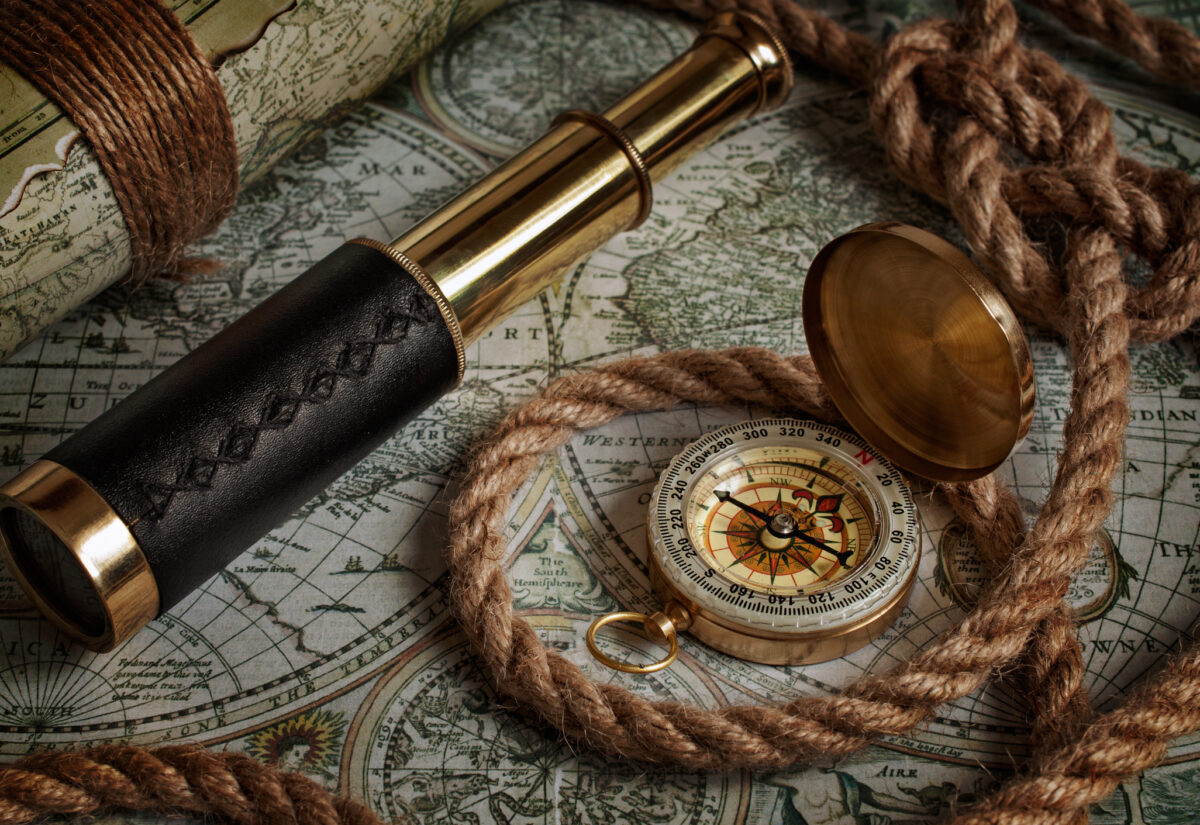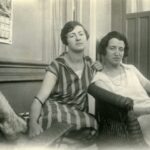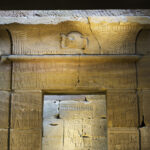 Getty Images/iStockphoto
Getty Images/iStockphotoWhen people think of great explorers, names like Christopher Columbus, Marco Polo, or Captain Cook usually come to mind. However, history is full of lesser-known adventurers—people who charted new territory, made world-changing discoveries, and shifted how we see the planet, only to be left out of the mainstream historical narrative. These forgotten explorers may not have become household names, but their contributions were no less remarkable. From circumnavigating the globe in secret to gathering priceless information that changed how cultures understood the world around them, these are stories worth rediscovering. Here are ten explorers who deserve far more recognition than they usually get.
1. Ibn Battuta (1304–1369)
Though widely celebrated in parts of the Islamic world, Ibn Battuta remains surprisingly unknown in the West. This Moroccan scholar and traveller embarked on a 30-year journey that covered over 75,000 miles across North and West Africa, the Middle East, Central Asia, the Indian subcontinent, Southeast Asia, and even China, making his travels more extensive than those of Marco Polo.
He recorded his adventures in the Rihla, a remarkable travelogue commissioned by the Sultan of Morocco. His writings offer detailed insight into the legal systems, trade practices, customs, and cultures of the Muslim world and beyond during the 14th century. What sets Ibn Battuta apart isn’t just the scale of his journey, but the depth with which he documented the people and societies he encountered, creating an invaluable historical record of a globally connected world before European colonial expansion.
2. Jeanne Baret (1740–1807)
Jeanne Baret was a French botanist and the first woman known to have circumnavigated the globe. She disguised herself as a man to join Louis Antoine de Bougainville’s expedition in the 1760s, during a time when women were banned from such voyages. Under the alias “Jean,” she served as an assistant to botanist Philibert Commerson, with whom she collected thousands of plant specimens.
Despite facing enormous physical and emotional challenges, including the threat of exposure and mistreatment by the crew, Baret persisted. After Commerson’s death, she continued travelling, eventually marrying and returning to France. Only later was her role properly acknowledged. Today, she is celebrated not just as a pioneering woman in science and exploration, but also as a symbol of resilience in the face of systemic exclusion.
3. Matthew Henson (1866–1955)
Matthew Henson was an African-American explorer and one of the key figures in the first successful expedition to the North Pole in 1909, alongside Robert Peary. Henson, an experienced navigator and craftsman, was deeply respected by the Inuit people he encountered and was likely the first person from the expedition to physically reach the Pole.
Yet, for decades, Henson’s contributions were minimised due to the racism of the time. He spent years in relative obscurity, only gaining official recognition late in life. Today, his name is increasingly mentioned in discussions of polar exploration, and he’s finally being celebrated for the crucial role he played in one of the most daring expeditions in history.
4. Alexander von Humboldt (1769–1859)
A Prussian polymath, naturalist, and geographer, Humboldt travelled through South and Central America in the early 19th century, conducting scientific observations that laid the groundwork for several modern fields of study. He climbed volcanoes, studied plant distribution, mapped river systems, and theorised about the interconnectedness of ecosystems.
Humboldt’s influence reached far beyond exploration. His five-volume Kosmos sought to unify all knowledge of the physical world, and his work inspired thinkers like Charles Darwin, Simón Bolívar, and Henry David Thoreau. His legacy is vast, yet he remains relatively unknown outside academic and scientific circles. Some of his most astonishing insights, including the relationship between deforestation and climate change, were centuries ahead of their time.
5. Krystyna Chojnowska-Liskiewicz (1936–2021)
Polish engineer and sailor Krystyna Chojnowska-Liskiewicz was the first woman to sail solo around the world. Starting her journey in 1976 aboard a 10-metre yacht named Mazurek, she spent 401 days at sea, covering more than 31,000 nautical miles. She braved treacherous weather, mechanical issues, and total isolation, all while navigating using traditional tools.
Her voyage was completed two months before British sailor Naomi James achieved the same feat. However, unlike James, Chojnowska-Liskiewicz’s name rarely appears in the canon of great explorers, particularly in English-speaking countries. Her story deserves far more attention, especially for breaking gender barriers in a field still dominated by men.
6. Pytheas of Massalia (c. 350–285 BCE)
Pytheas was a Greek geographer and explorer from the city of Massalia (modern-day Marseille) who sailed beyond the familiar boundaries of the Mediterranean into northern Europe around 325 BCE. He reached the British Isles, possibly travelled to Iceland, and described the phenomenon of the midnight sun.
Though many of his contemporaries doubted his claims, later findings confirmed much of what he observed, including tides influenced by the moon and the existence of polar ice. Most of Pytheas’s writings have been lost, but surviving references in later works prove he was among the first Mediterranean explorers to venture so far north, expanding geographical understanding in an age where much of the world was still considered unknown.
7. Isabella Bird (1831–1904)
Isabella Bird was a British explorer, writer, and photographer who defied Victorian expectations of women by travelling alone through rugged and unfamiliar territories. She journeyed across North America, the Middle East, India, Korea, China, and Japan, often in harsh conditions and on horseback.
Her detailed and engaging travel books, such as A Lady’s Life in the Rocky Mountains and Among the Tibetans, became bestsellers and remain valuable ethnographic records. Bird became the first woman elected to the Royal Geographical Society. She used her fame to advocate for health care and women’s rights, and her legacy is one of curiosity, courage, and compassion.
8. Abu Abdullah al-Bakri (c. 1014–1094)
Though he never travelled beyond his homeland of Al-Andalus (modern-day Spain), al-Bakri compiled some of the most comprehensive geographical and cultural records of West Africa, the Arabian Peninsula, and Europe in the 11th century. Drawing from merchant accounts, travellers, and oral histories, his Book of Roads and Kingdoms painted a vivid picture of regions little known to the Islamic or European worlds at the time.
He wrote about the Ghana Empire, the city of Timbuktu, and various trade networks in sub-Saharan Africa with impressive detail. His writings offer early evidence of advanced societies in Africa and challenge colonial-era myths of a “dark continent.” Al-Bakri’s work shows that exploration is also about knowledge gathering, not just physical travel.
9. Jan Carstenszoon (c. 1580–1638)
Jan Carstenszoon was a Dutch explorer who sailed along the northern coast of Australia in 1623, decades before James Cook’s voyages. He mapped parts of the Gulf of Carpentaria and recorded observations about the land and Indigenous peoples. His expeditions contributed significantly to the early European understanding of the Australian continent.
Although Carstenszoon faced immense difficulties, including crew mutinies and deadly encounters, his charts and records formed the basis of Dutch maps for generations. Despite his early and pioneering efforts, his name is rarely mentioned outside maritime history circles. He was one of the first Europeans to grasp the scale and complexity of Australia’s northern landscape.
10. Narayan Pandit (dates uncertain)
Narayan Pandit may not have traversed oceans, but his cultural and literary reach was immense. As the compiler of the Hitopadesha, a Sanskrit collection of fables and moral tales likely written between the 9th and 12th centuries, he played a pivotal role in the transmission of philosophical and ethical thought across India and beyond.
These stories were translated into Persian, Arabic, and many European languages over time, influencing literature and moral teaching far beyond the Indian subcontinent. The spread of these tales can be viewed as a form of intellectual exploration, disseminating values, social norms, and wisdom across generations and geographies. In a world where ideas often moved as powerfully as people, Narayan Pandit’s influence endures.
These forgotten explorers expanded the world’s understanding in quiet but lasting ways. They crossed oceans, endured hardship, challenged norms, and mapped not just physical terrain, but new ways of seeing it. Their stories remind us that history isn’t only shaped by those who make the loudest impact—it’s also written by those who go overlooked, yet leave behind trails the world continues to follow. By revisiting their legacies, we don’t just honour their courage. We also broaden our own understanding of exploration, discovery, and what it truly means to chart the unknown.



